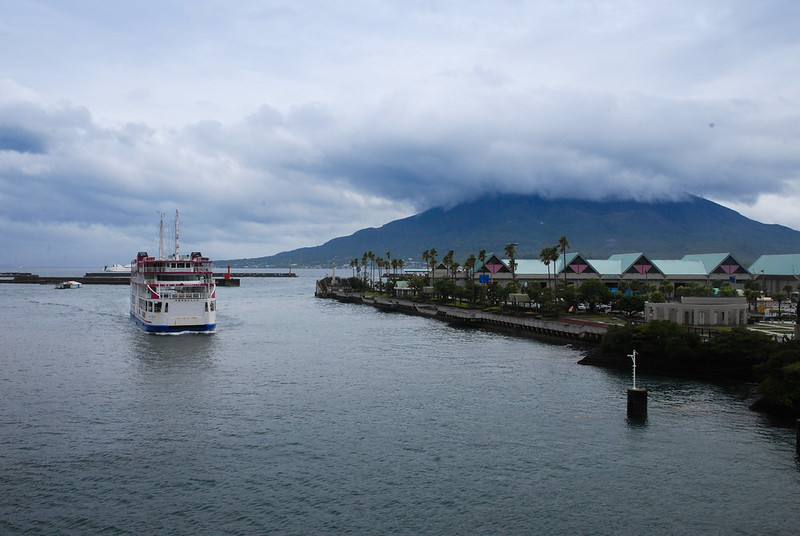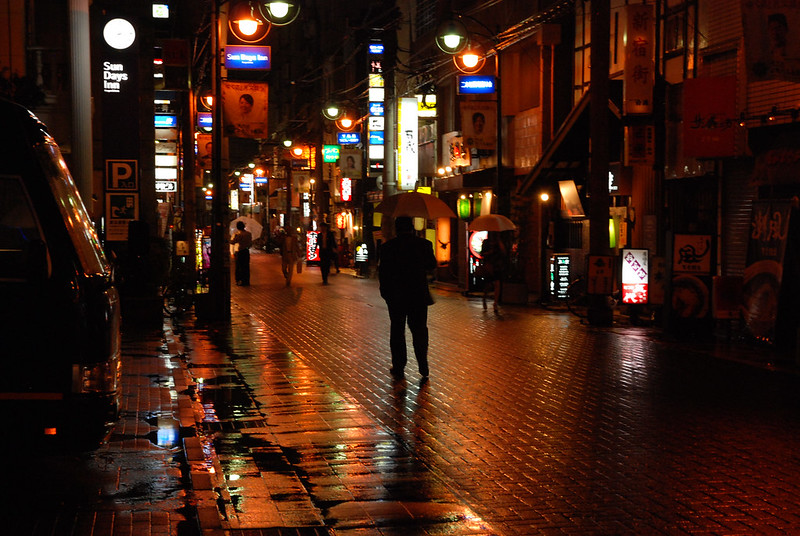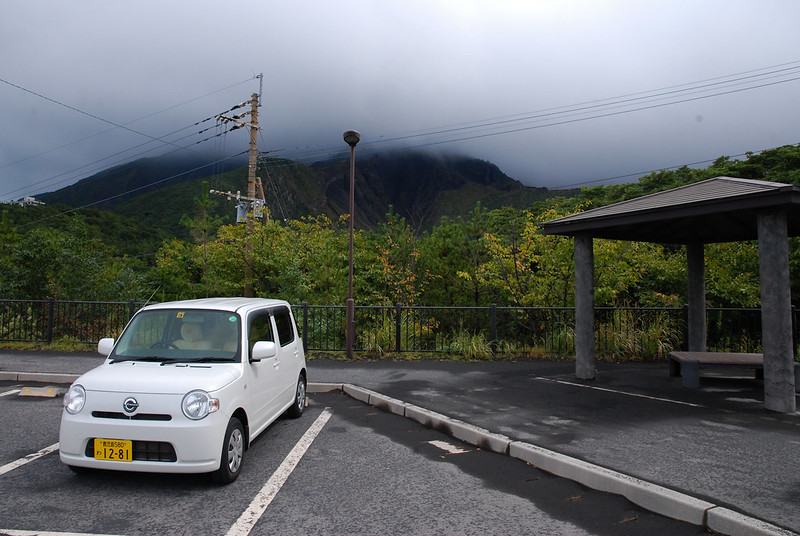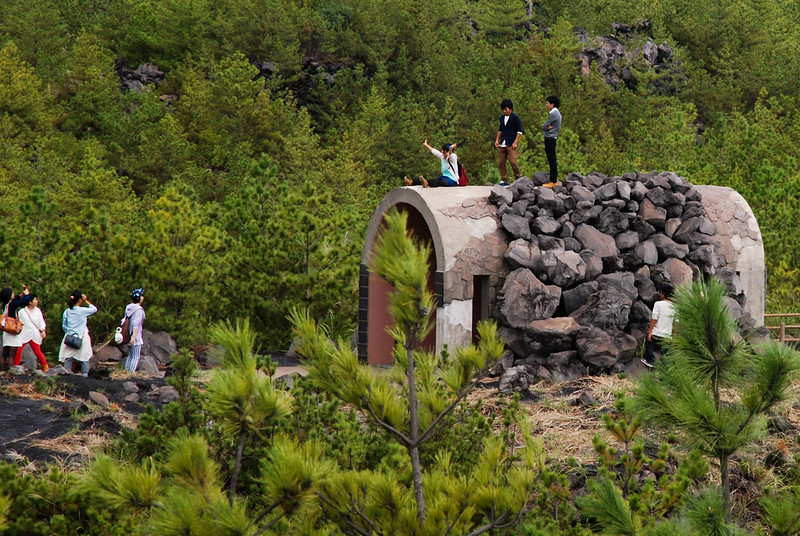If getting from Nagasaki to Kumamoto proved a bit tricky, getting from Kumamoto to Kagoshima is a breeze: jump on the Kyushu Shinkansen and head south – it terminates at Kagoshimachuo station, right in the city (Kagoshima Eki is to the northwest). I arrived in town early in the morning to find shopkeepers still busy hosing and brushing down the pavements outside their stores, washing away the latest shower of ash from Sakurajima, burbling away across the bay.
Sights in Kagoshima
And, to be honest, it was Sakurajima that I’d come to see – but there’s a lot to like on the mainland itself, too. Tram line number 2 will take you away from the station and east down the Miyako-dori; the main covered shopping street runs off this road. The area around the Miyako-dori area stays bustling into the evening, with the shopping and entertainment district blurring into a slightly red-light-y area in places – a mini Shinjuku of sorts, just without the station.
To the north there’s a ‘cultural area’ including the Reimeikan museum, and there are also some impressive temples and open spaces in the town – sadly as I walked into town it was besieged by strong wind and pouring rain (that typhoon was still lurking offshore) so I don’t have any photos. Later on in the day the weather finally cleared, and I took a hike up behind the Terukuni-Jinja – this is an easy walk, maybe an hour or most, and takes you to an observation point where you can look down over the entire city, with the sea and Sakurajima beyond.
Sakurajima
The unmissable sight of Kagoshima, though, is Sakurajima. And it’s easy to get there: car ferries arrive and depart almost constantly from the port due east of Shiyakushomae tram stop (also just a short walk if you’re in town). Just wander into the terminal, and then onto a boat – you pay at the other side, and it’s just 150 yen. There’s a small shop on board the ferry where you can buy instant noodles, coffee and the like.
On arrival, I realised that the island wasn’t at all what I’d expected: I had imagined a few businesses and hotels, but not the group of small towns that huddle around the bottom of the rather active volcano. The area around the port isn’t much to look at, though, so you’ll need transport. Directly behind the ferry terminal I found a small car rental shop (look for 桜島レンタカー, or the phone number is (099) 293-2162) offering short term car rental at 4500yen for two hours, plus 1000 yen per extra hour (I’d bank on 3 hours to circle the island, stopping occasionally). The shop has an excellent map, and the cars have (Japanese) GPS.
From the rental shop, I took the 6km drive up the mountain road that heads inland and up to an observation point. On a clear day, I’m sure this would be stunning – as it was, I got a good view of the side of the mountain and a lot of cloud. There’s a small shop in the observation building where you can buy drinks and instant ramen – not a bad idea, as the island isn’t crammed with restaurants or convenience stores (I didn’t see one).
I then headed for the southern coast of the island, where there are a couple of onsen hotels. Several guides recommend the Furosato Kanko hotel – I stopped to find it very closed (looking abandoned, in fact – apparently it filed for bankruptcy). Just a little further down the road, though, is the Seaside hotel – look for a sign with the name in katakana (シーサイドホテル). To be honest, this one also looks quite closed, but I spotted people in the reception so went in to enquire.
I was directed downstairs and to the left, and after wandering a few not entirely lit corridors, came across a changing room, a deserted onsen and – best of all – a rotenburo looking out across the sea (apparently there’s a mixed gender rotenburu also, but I didn’t find that). For all of 500 yen, amazing.
Further around the south coast is the lava observation point, where you can walk several paths around areas of lava flow, now covered in lush greenery. As I visited it was absolutely crowded with school trips and kids taking photos of one another atop the shelters that can be found dotted around. It’s worth a stop if you’re nearby.
From there, I continued around the island, anticlockwise – there’s not too much more to note other than a Torii gate half-buried by a previous eruption (you’ll need coins to park in order to see this), and another small cluster of onsen on the north coast – by now torrential rain was coming down again, so I skipped past and back to the port.
Staying and Eating
I stayed at the Sun Days Inn, right in the middle of the city – if you can read enough Japanese (or maybe bluff it with a healthy dose of Google Translate) to book online, this is super-cheap and really pleasant. There are restaurants all around in the centre, and also several cheap places to eat in the large AMU Plaza department store adjoining Kagoshimachuo station.
I loved Kagoshima, and could have easily loitered around for a couple of days. With limited time, though, I departed the next day, heading for Aoshima.
This is part of my Japan on a Budget series – a collection of random advice on how to travel Japan without spending a fortune. See the rest here.




Leave a Reply
You must be logged in to post a comment.